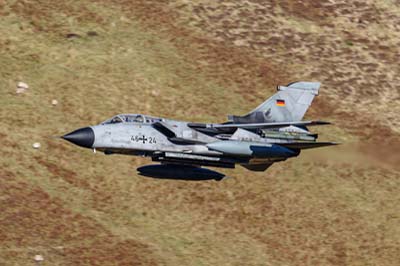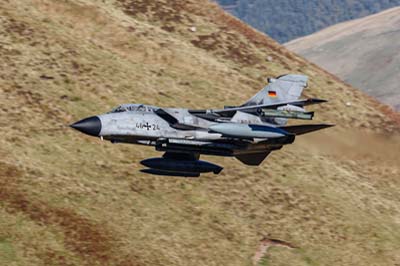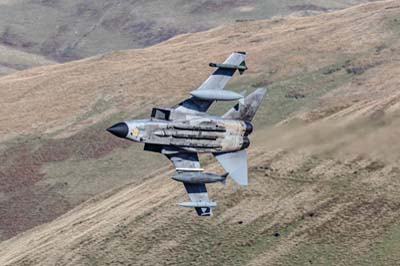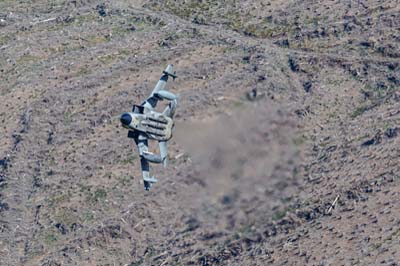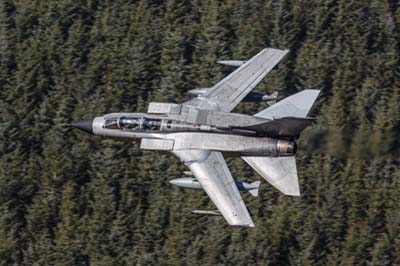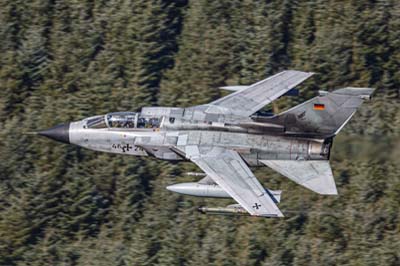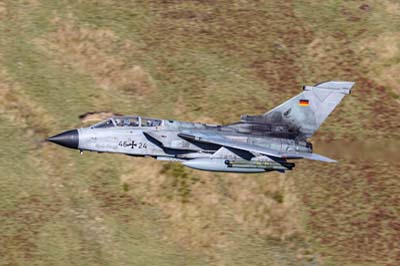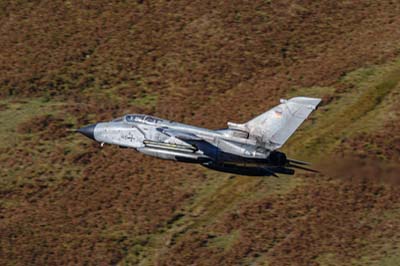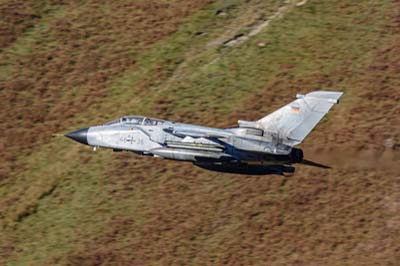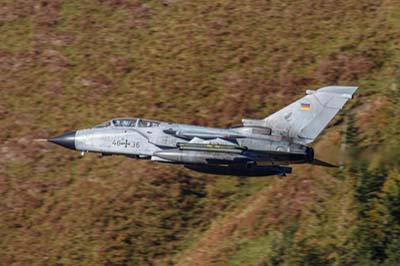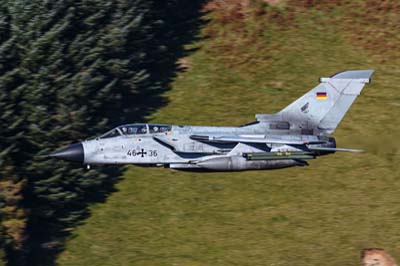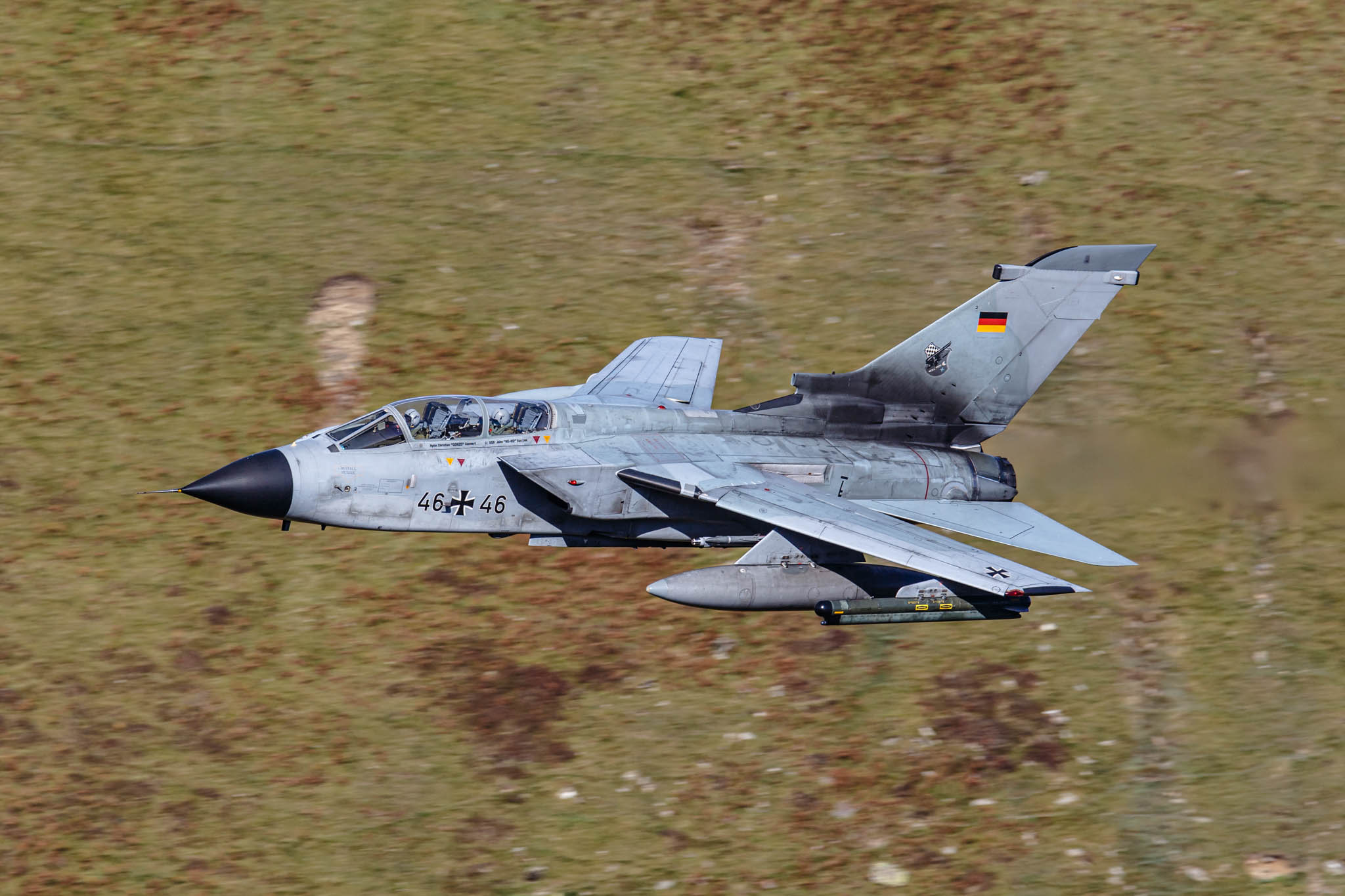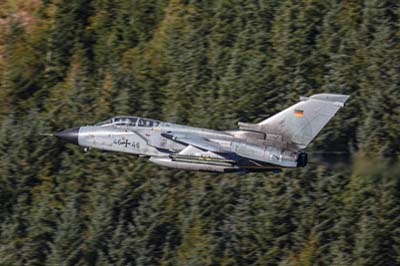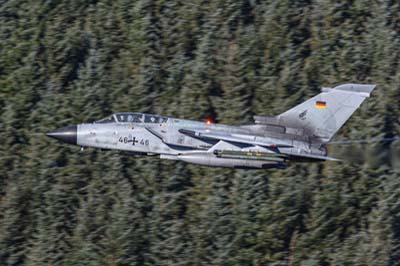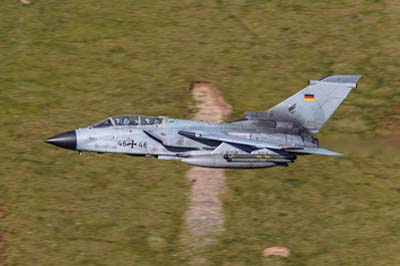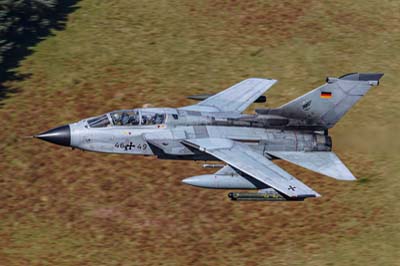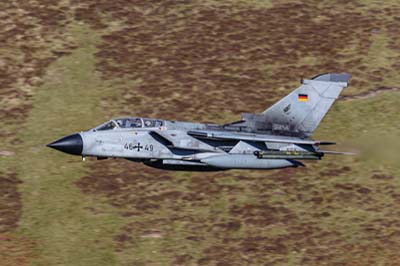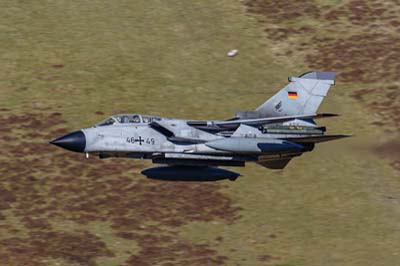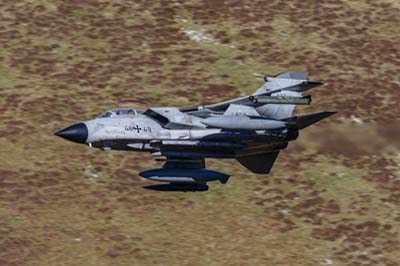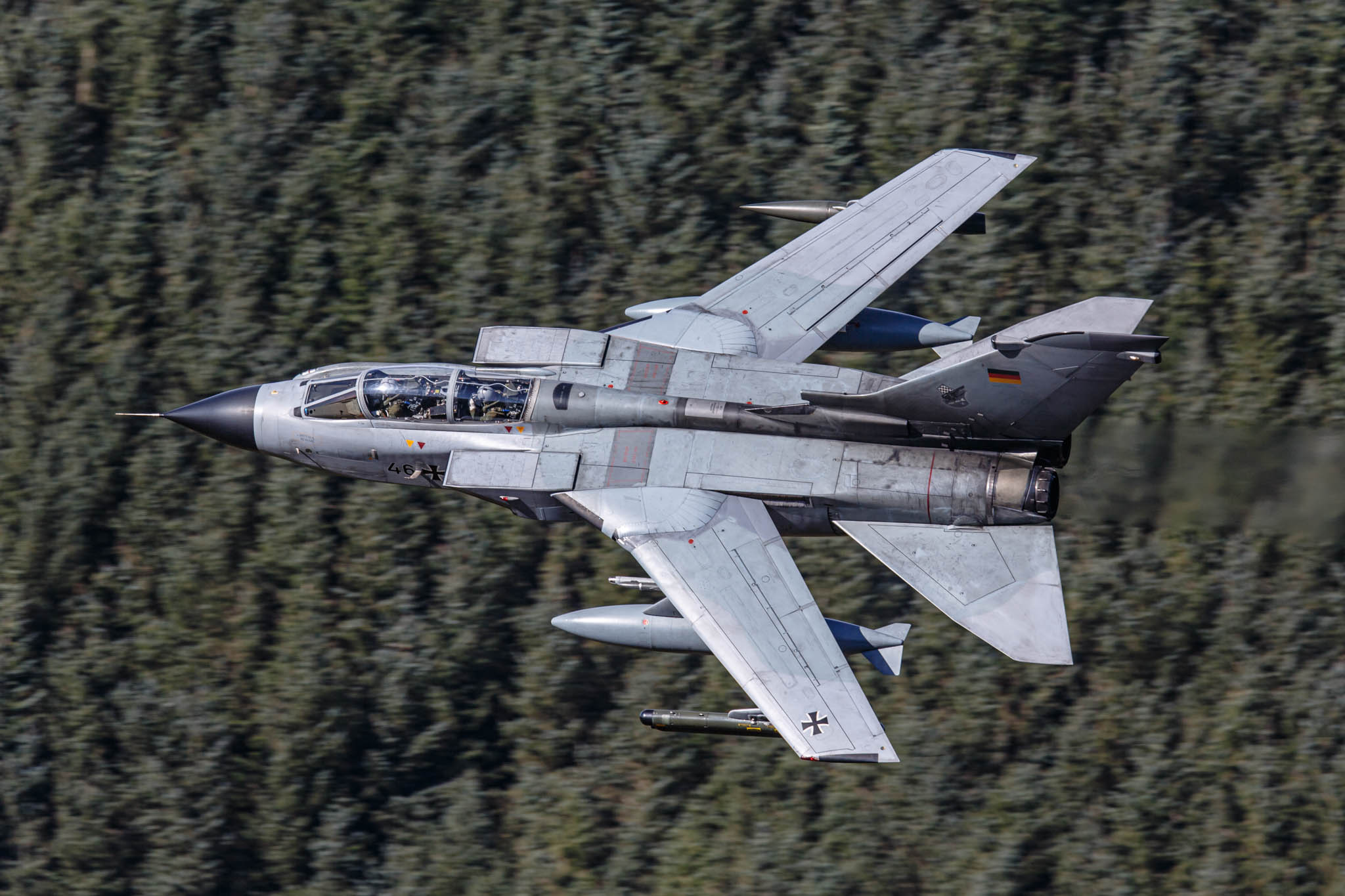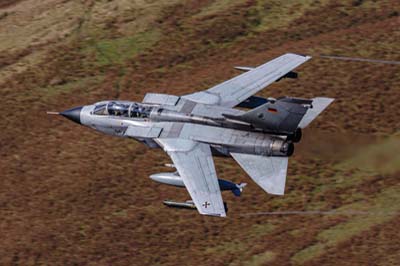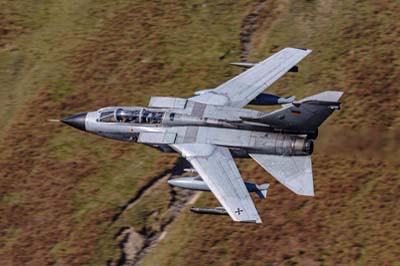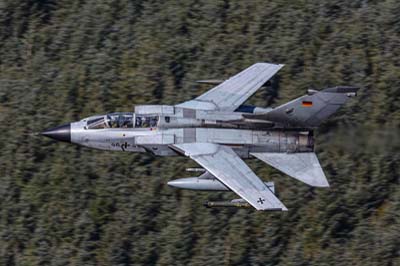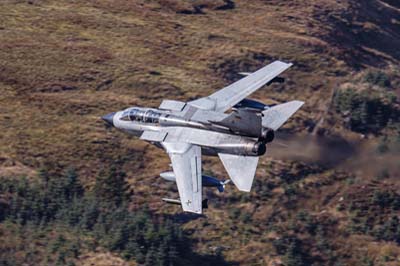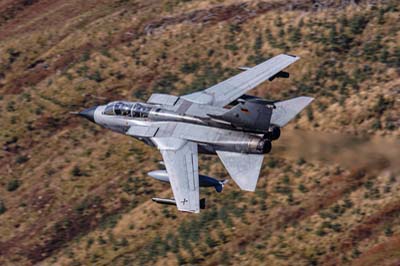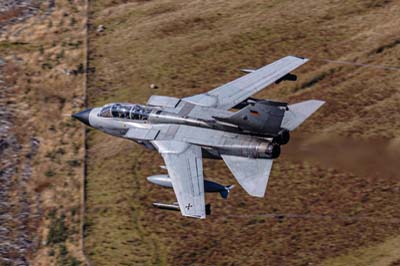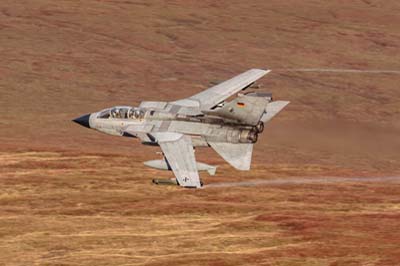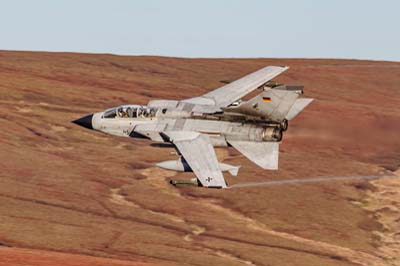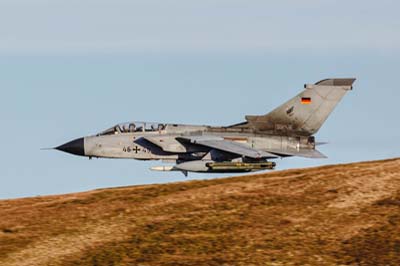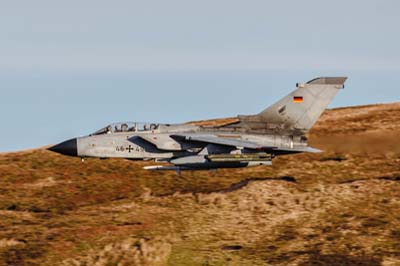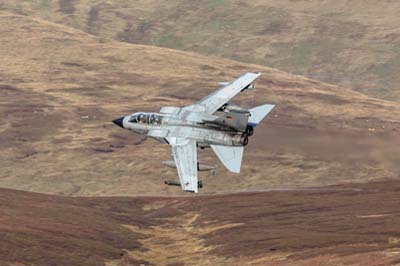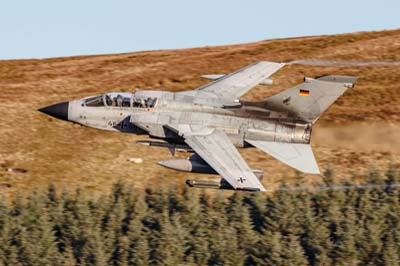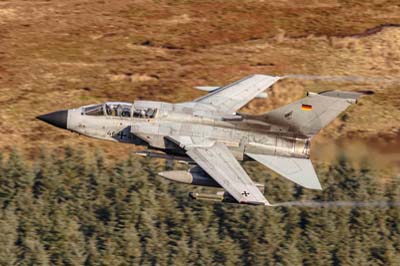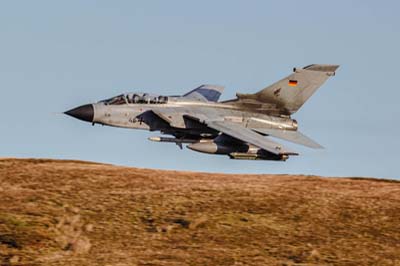Low-Level Flying Photography
German Air Force at Joint Warrior JW12-2
October 2012
|
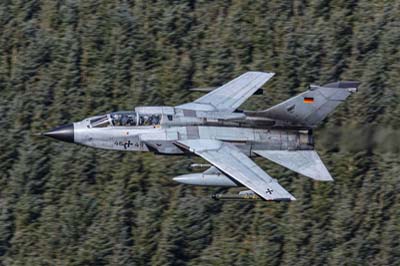 |
Tornado ECR (46+49) of JBG 32 German Air Force based at Lechfeld. The ECR (Electronic Combat and Reconnaissance) variant carries a Cerberus ECM/EW (Electronic Counter-Measures/Electronic Warfare) pod on the port wing pylon. A BOZ 101 chaff and flare pod is normally carried on the starboard wing pylon. |
Joint Warrior is a multi-national NATO exercise which takes place across the United Kingdom twice a year, it's key aims are to improve understanding and interoperability amongst NATO air, land and maritime forces. The second such exercise of the year (JW122) took place from October 1 to 11.
The Luftwaffe (German Air Force) Panavia PA-200 Tornado ECR/IDS were joined at RAF Leuchars by seven Maritime Patrol Aircraft (MPA) including; Lockheed P-3C Orions from NAS Jacksonville, a Boeing P-8A Poseidon from VX-1 (Air Test and Evaluation Squadron One) at NAS Patuxent River, a Lockheed CP-140 Aurora from Canada and a Dassault Atlantique II from France. Additional air assets comprised a total of 40 fixed wing aircraft including; Boeing F-15E Strike Eagles from RAF Lakenheath; Lockheed TriStar tankers from RAF Brize Norton, Boeing E-3D Sentry and a Sentinel R1 from RAF Waddington and NATO Boeing E-3A AWACS based at Geilenkirchen in Germany. A detachment of Swedish Saab JAS-39 Gripen deployed with RAF BAC Hawks T.1s, Panavia Tornado GR4s and Eurofighter Typhoon FGR.4 flew from RAF Lossiemouth in Scotland. 27 Naval assets from UK, the US, Belgium, Germany, Holland, France, Norway, Denmark and Estonia were also in operation in and around Scottish waters.
The exercise scenario involved multiple sovereign nations, disputed territory, smuggling, piracy and terrorist activity. As it plays out the scenario developed from a period of military and political tension to simulated war-fighting and state-on-state hostilities - all providing realistic training for the participants.
German contingent - Low-level down to 250 feet
A key element were the 14 GermanTornado ECR/IDS aircraft which were deployed to RAF Leuchars in Scotland, they arrived on September 26 from three air bases across Germany. The German force consisted of; Tornado ECR (Electronic Combat and Reconnaissance) of Jagdbombergeschwader 32 (JBG32) deployed from Lechfeld, Tornado IDS of JBG33 for the fighter-bomber role based at Büchel and Tornado IDS of Aufklärungsgeschwader 51 (AG51) in the Tactical Reconnaissance role from Schleswig.
For the German contingent it was a very important exercise as it enabled them to train using tactical weapons at low-level and in bad weather while working with their NATO partners, as they are in preparation for next year's FORCEVAL, a NATO Review of all flying operations. Crews were tasked with joint planning of air war operations and missions involving air attack, Close Air Support (CAS) and reconnaissance and suppression of Ground-Based Air Defence (GBAD). Simulated ground attack exercises supported by a FACs (Forward Air Controller) with the possibility of dogfights added to the complexity of the missions flown.
Usually two missions were tasked in the morning with another on some afternoons, flying as low as 250 feet the low-level sorties utilised two and four ship formations of Tornado IDS and ECR variants. The first wave of six to eight aircraft would normally depart at 07:45 and return 90 minutes later. The difficult weather conditions in the harsh landscape of Scotland with the simultaneous threat of enemy air defence forces represented a real challenge to the aircrew. The Tornado ECRs of JBG32 were tasked with Suppression of Enemy Air Defence (SEAD) missions, equipped with the AGM-88 High-speed Anti-Radiation Missile (HARM) missile they flew numerous sorties at low-level to attack the Electronic Warfare and Threat Training Facility (EWTTF) at RAF Spadeadam in northern England. The site contains a dummy airfield, complete with aircraft, missile sites and vehicle convoys.
By the end of the exercise the German Tornado force had clocked up 151 missions of around 250 flight hours, they fired 1,054 cannon rounds and dropped 20 MK 82 practice bombs on various ranges. |
| Left to right: Tornado ECR (46+24) of JBG 32 German Air Force based at Lechfeld. The ECR (Electronic Combat and Reconnaissance) variant carries a Cerberus ECM/EW (Electronic Counter-Measures/Electronic Warfare) pod on the port wing pylon. A BOZ 101 chaff and flare pod is normally carried on the starboard wing pylon. |
| Left to right: Tornado ECR (46+24) of JBG 32 German Air Force based at Lechfeld. |
| Left to right: Tornado ECR (46+36) of JBG 32 German Air Force based at Lechfeld. |
| Tornado ECR (46+46) of JBG 32 German Air Force based at Lechfeld. |
| Left to right: Tornado ECR (46+46) of JBG 32 German Air Force based at Lechfeld. |
| Left to right: Tornado ECR (46+49) of JBG 32 German Air Force based at Lechfeld. |
| Tornado ECR (46+49) of JBG 32 German Air Force based at Lechfeld. |
| Left to right: Tornado ECR (46+49) of JBG 32 German Air Force based at Lechfeld. |
| Left to right: Tornado ECR (46+49) of JBG 32 German Air Force based at Lechfeld. |
| Left to right: German Air Force Panavia PA-200 Tornado ECR (46+49) of Jagdbombergeschwader 32 (JBG 32) based at Lechfeld. It is carrying a AGM-88 High-speed Anti-Radiation Missile (HARM) on the centreline pylon. |
| Left to right: German Air Force Tornado ECR (46+46) of JBG 32 based at Lechfeld. It is carrying a AGM-88 High-speed Anti-Radiation Missile (HARM). |
